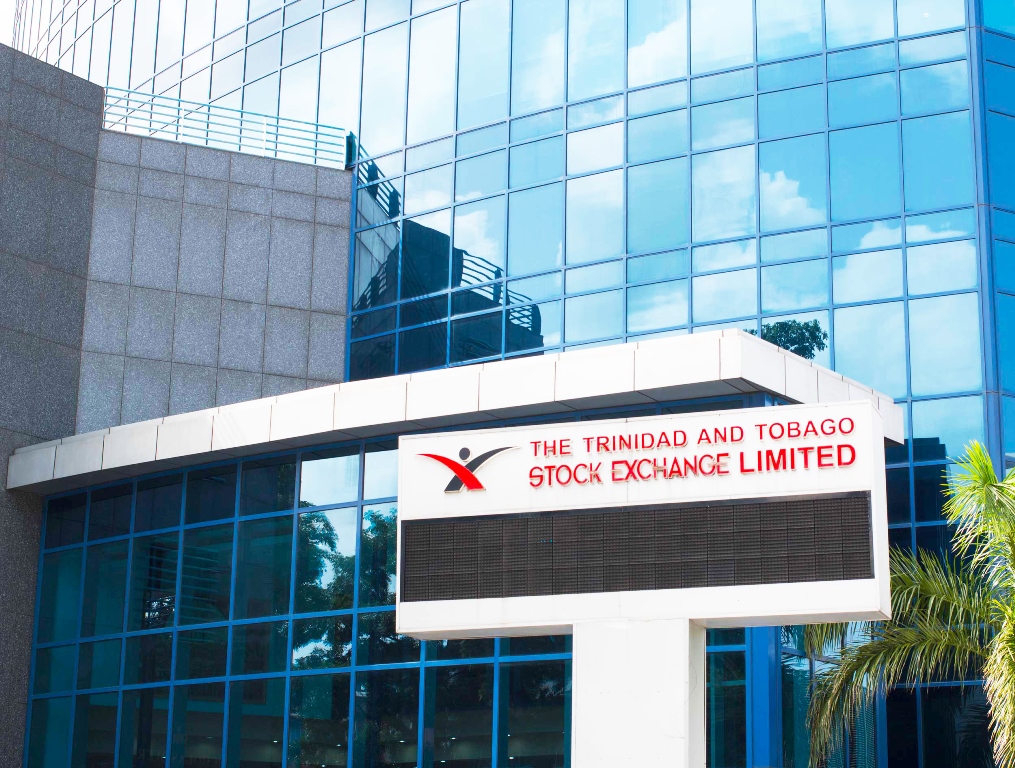[heading tag=”h2″ align=”center” color=”#000″ style=”lines” color2=”#000″]Learning Objectives [/heading]
-
How to build a basic investment portfolio
-
What is Asset Allocation – Bonds, Equities, Mutual Funds
-
The importance of diversification and the concept of risk in investing
[heading tag=”h2″ align=”center” color=”#000″ style=”lines” color2=”#000″]What is an investment portfolio? [/heading]
An investment portfolio is a combination of different investment assets mixed and matched for the purpose of achieving an investor’s goal(s). E.g. If all of your money is held in a Credit Union or a Mutual Fund, then that’s your portfolio. But it may not be a smart investment portfolio, as there is no guarantee that the institutions will remain viable or that the fund will remain profitable. Remember you should never put ALL your eggs in ONE basket!
[heading tag=”h2″ align=”center” color=”#000″ style=”lines” color2=”#000″]Why build an investment portfolio? [/heading]
You may wish to build an investment portfolio to meet a long-term goal. You should frequently revisit your long-term goals to see if any adjustments should be made based on your financial status.
It is important to understand how to make money work for you and the instruments in which you can invest to help your money grow over time.
A critical concept is the fact that all investments carry some level of risk. It is up to you to determine your risk profile i.e. whether you are comfortable taking risks (risk-taker) or whether risk makes you uncomfortable (risk-averse).
Every individual needs to look at what’s right for him/her at each stage in life since one’s life stage influences one’s willingness to take risk. Most persons start saving when they begin working or have a permanent job and a steady income becomes available. The buildup of savings is what is used to start an investment portfolio. The aim is to create a sizeable portfolio of diversified assets that should last through to retirement.
[heading tag=”h2″ align=”center” color=”#000″ style=”lines” color2=”#000″]Asset Allocation [/heading]
Once an individual has determined his/her life’s goals, and for how long he/she wishes to save and invest, he/she needs to consider allocating his/her assets. One of the most important decisions when constructing a portfolio is asset allocation. This ensures that a portfolio has the right mix of assets to suit an individual’s circumstances, investment goals and attitude to risk.
Even though you may not have a great deal of assets now, you need to be aware of your options should you come into a sizeable amount of money. Every investor is unique, but everyone faces the same trade-off between risk and reward. In simple terms, one can’t hope for long-term, above-average returns, unless one is willing to take on more risk. There is generally a positive relationship between risk and return, that is, the higher the return, the greater the risk and the lower the return, the lower the risk.
Investment professionals consider ‘diversification’ to be one of the golden rules of building a portfolio. It means placing your money in different types of investments – known as asset classes. Aside from cash, the two asset classes of most interest to investors are equities (stocks and shares) and fixed income (bonds). Both have their advantages and disadvantages.
Investing in equities (stocks/ shares) is a viable option for the medium – long term, at least five to ten years. If an individual is less likely to take risk i.e. he/she is risk averse, he/she can invest in bonds.
[heading tag=”h2″ align=”center” color=”#000″ style=”lines” color2=”#000″]Bonds [/heading]
Governments may issue bonds if they want to raise money to pay for new projects, for example: to build hospitals, schools or repair highways, or supplement their tax revenues to pay for day-to-day operations. Companies issue bonds to pay for equipment, buy real estate or raise money.
Bonds, when purchased, are a loan to a specific entity, which promise (but usually don’t guarantee) repayment of the money you invest, plus interest for the use of that money. The ‘issuer’ of the bond agrees to pay the buyer of the bond a specified rate of interest for a pre-determined length of time. The issuer will repay the face value of the bond (the principal) when it “matures,” or comes due.
[heading tag=”h2″ align=”center” color=”#000″ style=”lines” color2=”#000″]How Bonds work? [/heading]
The Government or a corporation advertises, usually in the daily newspaper, that they will be issuing a bond. All details pertaining to where to go and how to proceed with purchasing the bond are indicated in the advertisement.
You, the investor, then proceed to purchase the bond. The government pays you back over a set period with interest, so that you get back more than you put in. The interest payments are paid incrementally and the full principal initially invested, is paid to you at the end of the set period. Bonds issued by the Government usually tend to have a low risk because even if a new government comes into power; the debt is still honoured. However, government bonds may also pay a lower return than corporate bonds.
Bonds issued by a large corporation are, on average, riskier than bonds issued by a government, but are less risky than shares. This is because the corporation may go out of business and may not be able to repay the debt. Corporate bonds do range from low to high risk and often pay a higher return than government bonds do, in order to attract investors.
[heading tag=”h2″ align=”center” color=”#000″ style=”lines” color2=”#000″]Key characteristics of bonds [/heading]
Bonds are usually described on the basis of these key characteristics:
- Par value or face value: the amount you are lending and expect to be paid in return.
- Term: the length of time until the bond matures.
- Maturity date: the date on which the principal is to be paid to you in full.
- Interest: the percentage of the loan amount that the borrower will pay you for the use of your money over the term.
[heading tag=”h2″ align=”center” color=”#000″ style=”lines” color2=”#000″]How can you make money with bonds? [/heading]
You can make money with bonds in two ways:
- Interest – Bonds typically pay interest at regular intervals at a specified rate throughout the life of the bond. The interest payments from the bond normally provide you with a fixed source of income for the bond’s term. In most cases, the rate is fixed at the time the bond is issued. The interest rate is determined by a number of factors, including the bond’s term, current market rates and the soundness of its issuer. For example, if you invest $1,000.00 in a bond with a coupon rate of 5%, you should collect $50.00 per year in interest income for each year of the life of the bond.
- Capital gains – You may also make a profit by selling a bond before maturity at a higher price than you paid for it. However, capital gains are not guaranteed as you may also lose if you are forced to sell before maturity at a lower price than that paid for the bond.
NOTE – If you sell a bond before maturity you also forego all future interest income payments!
[heading tag=”h2″ align=”center” color=”#000″ style=”lines” color2=”#000″]Additional Reading- CariCris [/heading]
The Caribbean Information and Credit Rating Services Limited (CARICRIS) is the Caribbean’s regional credit rating agency. It is aimed at fostering and supporting the development of regional debt markets in the Caribbean.
CARICRIS provides to bond issuers, investors and financial regulators, a regional credit rating framework for comparing the relative creditworthiness of risk entities in the region. Basically CARICRIS is a good gauge for assessing the viability of a country or a company in which you wish to invest .
CARICRIS provides a scientific approach to investment decision-making. The website caricris.com provides the necessary information on the ratings by country and company, and also explains the rating scales and criteria used – for example – long-term ratings pertain to bond instruments. Based on the current rating list for Trinidad and Tobago when compared to the region it has a high positive rating.
[heading tag=”h2″ align=”center” color=”#000″ style=”lines” color2=”#000″]Equities [/heading]
Equities also known as stocks and shares, are riskier than bonds. It is therefore not advisable that you put all of your money into equities.
Owning shares of a stock represents an ownership share in a company. Shareholders, as owners of a company, generally have voting rights but have no guarantee of income. Shareholders have no guarantee that the company will grow or even that it will survive.
Companies sell shares of stock in their businesses as a way of raising money to help their businesses grow. The first offering of stocks for sale by a company is called the “initial public offering,” or IPO.
Having an IPO is referred to as “going public.” When a company does not have any publicly traded shares of its stock, it is a privately held business.
[heading tag=”h2″ align=”center” color=”#000″ style=”lines” color2=”#000″]Benefits of stocks [/heading]
As a stockholder, you have partial ownership of a company and the opportunity to grow your funds as a stock rises in value. However, stocks are a riskier investment than other types of investment options such as mutual funds or bonds, and if the value of the stock falls, the potential for growing your investment falls as well.
Each company has a ticker symbol, an abbreviation of one to four letters that identifies the company on the financial news. Individuals generally buy and sell stocks through a broker-dealer.
Ensure your broker-dealer is registered with the Trinidad and Tobago Securities and Exchange Commission (TTSEC), before conducting any investment transactions. Visit www.ttsec.org.tt for the TTSEC’s registrant listing.
Unless participating in an IPO, when someone buys shares of a publicly traded company, he /she is buying that stock from another investor who already owns the stock, not from the company itself.
When an individual buys shares, based on research and investment advice, he/she hopes that the company will do well, and that he/she makes a profit either through:
- Dividends – When a company makes a profit it also pays dividends to shareholders, which they receive as income. Dividends are distributions to stockholders in the form of cash or stock.
- Capital Gains – The payment of dividends may increase the demand for the stock on the exchange which leads to an increase in the value of the stock. If the stock price goes up, or appreciates, the shares can be sold for more than they were purchased and the investor makes a capital gain. The stock price, however, can also go down, and the investor could lose money, or make a capital loss.
The risk when investing in stocks, comes about because stock prices may be stable or very volatile due to their link to changing company and/or economic conditions. Therefore, stock investing requires a great deal of research and attention.
[heading tag=”h2″ align=”center” color=”#000″ style=”lines” color2=”#000″]Mutual Funds [/heading]
Mutual funds are a popular investment choice because mutual funds can have built-in diversification and professional fund management, which give them some advantages over purchasing individual stocks and bonds. Investing in a mutual fund still involves certain risks, including the possibility that an investor may lose money.
What is a mutual fund?
A mutual fund is an investment company that pools money from many investors and invests it on the basis of specific investment goals. The mutual fund raises money by selling its own shares to investors. The money is used to purchase a portfolio of stocks, bonds, short term money market instruments, other securities or assets, or some combination of these investments. Each share represents an ownership slice of the fund and gives the investor a proportional right, based on the number of shares he or she owns.
[heading tag=”h2″ align=”center” color=”#000″ style=”lines” color2=”#000″]How do Mutual Funds work? [/heading]
When an investor buys units/shares of a fund, he/she becomes a part owner of the fund, and if he/she owns units/shares in a mutual fund, he/she shares in its (funds) profits. When the fund earns income from dividends or interest, the fund pays those profits, after expenses, to its unit holders/shareholders in payments known as income distributions. Also, when the fund has capital gains from selling investments in its portfolio at a profit, it passes on those after-expense profits to shareholders as capital gain distributions.
An advantage of mutual funds is the ability to get access to buy and sell assets with relative ease. We call this liquidity. It is the degree to which an asset or security can be quickly bought or sold in the market without affecting the asset’s price. In general, with mutual funds, you are able to sell your funds in a short period of time without there being much difference between the sale price and the most current market value.








